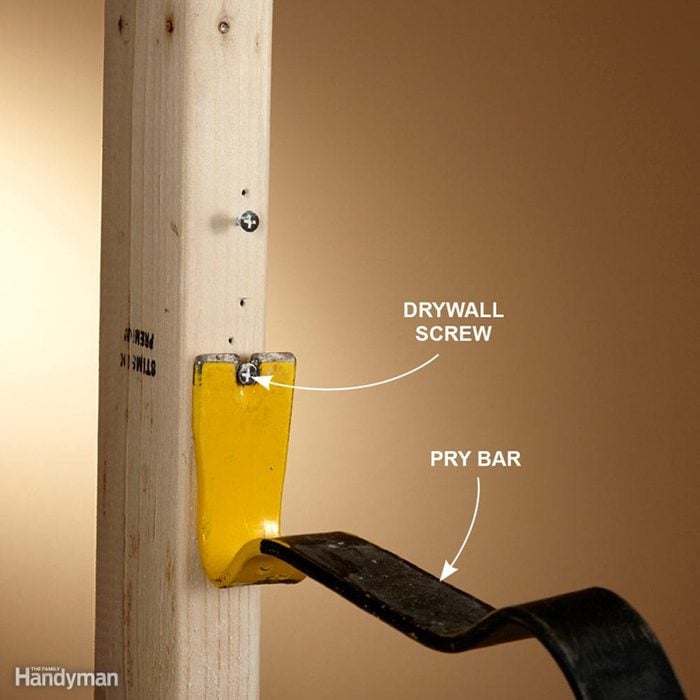
Slice Up Drywall With a Multitool
There seems to be no end of odd jobs that can be done with an oscillating tool, and here's another one: If you have to remove a section of damaged drywall, cut it out with a multitool equipped with a half-moon blade. The tool will cut almost as fast as you can pull it. And because the oscillations on the blade are so short and the teeth are so fine, the tool creates half the dust of a reciprocating or keyhole saw. Plus, the recess you cut will be much straighter and cleaner, making the patching work much easier.

Cut Around the Window With a Recip Saw

Cut the Jamb and Pull
You can knock a jamb sideways out of its opening, but the nails or screws holding it in place put up strong resistance to the shear force you apply.
An easier way is to cut one of the sides in half with a reciprocating saw and then pull the rest straight away from the framing. You can easily pull away any nails or screws holding the doorjambs in place simply by using the leverage of the jamb itself. Make your cut at an angle so the two cut sections don't wedge against each other, preventing you from pulling them apart. This same technique works for pulling out windows.

Pull Nails With a Nipper
If you're replacing windows, doors or flooring and you want to salvage the trim, end-nipper pliers are a handy tool to pull out brads and finish nails. The rounded end provides plenty of leverage, and if the nail breaks, you can always cut it down flush. Don't squeeze too hard when gripping the nail or you may nip it off prematurely.

Pull Drywall Screws

Knock Out Studs Sideways
A sledgehammer works great for busting up studs, but don't take a whack at the middle of the studs—they'll just wobble back and forth and probably bounce the head of the sledge right back in your direction. Hit the studs as close to the bottom plate as you can, but not so hard that you pull out the nails on the top plate—that's a good way to catch a falling stud in the noggin. Hit the bottom of each stud just far enough to dislodge it from the nails that were holding it. Then grab hold of it and pull it off the top plate.

Cut Off the Nails On the Plates

Suck Out Insulation
Tearing down a drywall ceiling is not a super-pleasant experience, but tearing down a ceiling that has 14 in. of blown-in insulation on top of it is a complete nightmare. Avoid that gigantic mess by sucking out all the insulation in the attic before pulling down any drywall.
The huge vacuum required for the job costs about $220 a day to rent, but if your local rental center doesn't carry them, call an insulation contractor in your area. Many blow-in insulation installers also have the equipment to suck out the insulation. But this service isn't cheap: Expect to pay about $1 to $1.50 per sq. ft. You might be able to get a deal if you use the same company to blow in the new insulation. Make sure your insulation is fiberglass or cellulose. If you even suspect there's vermiculite insulation in the attic, get an expert opinion before touching the stuff—it could contain asbestos.

Cut It Up With a Circular Saw
Sledgehammers, pry bars and reciprocating saws aren't the only demo heroes on the job site—your circular saw can be used for a heck of a lot more than cutting studs and sheets of plywood. Fitted with the right blade, your circular saw can cut up roofing, tin, concrete, rebar, steel doors and fiber cement. With a demo blade, you can cut up nail-embedded debris all day long.

Rent a Walk-Behind Floor Scraper

Cut Fiberglass Surround Into Pieces

Save Time
Cast iron tubs are ridiculously heavy. So unless it's a priceless collector's item, you don't want to have any part of moving one. Your best bet is to bust it up in place. It can be tough to get the cracking started, so begin hitting the tub at the edge. Once it does start breaking, pound your way along the smashed edges.
Throw a tarp or thick sheet of plastic over the top to cut down on flying shards of iron. And wear your safety gear, especially hearing protection—busting up a cast iron tub is like having a front row seat at a church bell convention. This tip works on just about anything brittle: old toilets, radiators, concrete laundry tubs, etc.

Cover Up Air Ducts
